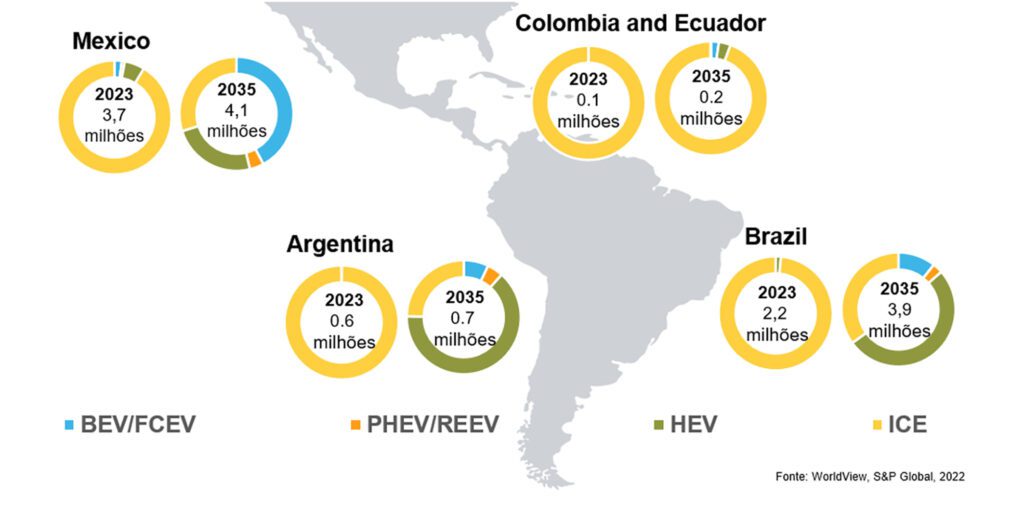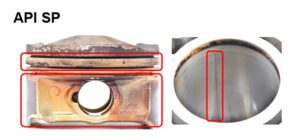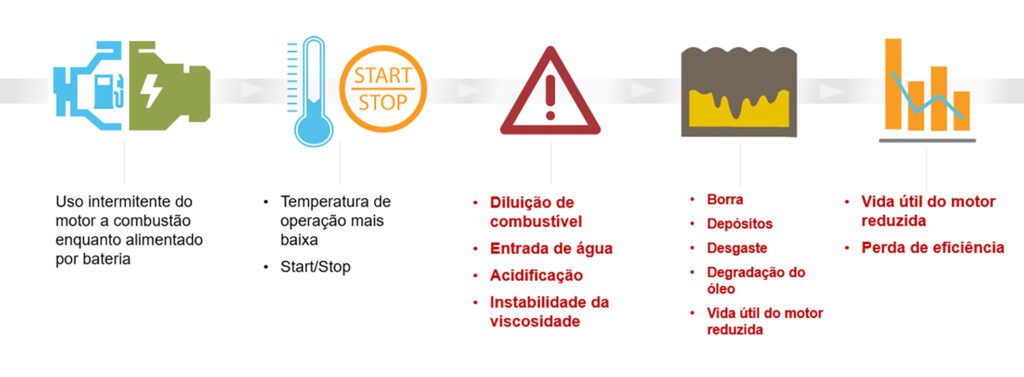
Hybrid vehicles
The volume of mild (MHEV)- and full (FHEV)-hybrid vehicles is growing rapidly in Latin America, both in terms of consumer demand and production. It’s a positive sign and a reflection of market desires and government incentives and policies that have the potential to transform the makeup of vehicles on the roads in Central and South America within a few years.
With these changes comes a need to address the need for higher-quality lubricants to support the engines in modern cars. The demand for higher-quality lubricants in Latin America has lagged behind the rest of the world for many years, which has always had implications for light vehicles with modern internal combustion engines (ICE), but the addition of hybrid-engine vehicles to the mix only makes the need for a lubricant upgrade more pronounced.
Vehicle production forecasts for the region tell the story. And the recent results of field testing of hybrid vehicle engine oils give good insights into the challenge at hand. All of these factors lead to a modern, fuel-efficient car parc.
 Hybrid growth forecast for Latin America
Hybrid growth forecast for Latin America
Estimates on car production for Latin America in the next decade show a robust move to new types of vehicles for the region.
Currently, according to S&P Global Mobility, the vast majority of this year´s estimated 6.5 million light vehicles produced in Argentina, Brazil, Columbia, Ecuador and Mexico are vehicles with an internal combustion engine (ICE). A small percentage of Mexico’s production is battery-electric vehicles (BEV) and Brazil is producing some hybrid-electric vehicles now, but that is all shifting rapidly toward even more electrification. Forecasts from S&P Global Mobility show a shift to BEV in Mexico in the coming years, with well over half of vehicles produced in Mexico estimated to be battery-electric vehicles by 2032. These shifts are driven by vehicle production for other sales regions, government, and other incentives and will have huge implications for this production country.
 In the long term production of mild- and full-hybrid vehicles will dominate the other countries in Latin America outside of Mexico and the implications are just as large. According to S&P Global Mobility estimates hybrid production ramping up significantly and is expected to be the dominant type of vehicle produced in Argentina, Brazil, Columbia, and Ecuador by 2035.
In the long term production of mild- and full-hybrid vehicles will dominate the other countries in Latin America outside of Mexico and the implications are just as large. According to S&P Global Mobility estimates hybrid production ramping up significantly and is expected to be the dominant type of vehicle produced in Argentina, Brazil, Columbia, and Ecuador by 2035.
Worldwide, mild-hybrid and full-hybrid vehicle production is expected to overtake ICE-only production at the beginning of the next decade, so it’s fair to say that Latin America is following the transition to hybrid vehicle production closely.
At the same time, Latin America has been slow to adopt higher-quality lubricants that bring more fuel efficiency and longer engine life to ICE and hybrid vehicles.
Technical challenges inhibiting LATAM hybrid growth
As hybrid use grows in the region, consumers will face the challenge of outdated engine oil lubricant standards. Right now, many engine oil lubricants in Latin America are formulated only to meet API SM, which is not considered suitable for engines produced after 2010. That’s not ideal for modern ICE vehicles, let alone new hybrid vehicles. The result is that end users end up with lower performance and potential engine issues.
Key regions in Latin America are reluctant to move away from Group I base oils. But higher-performing lubricants demand other base oil categories. The situation is understandable because Brazil is a big producer of Group I base oils, while Group II base oils typically are imported to Latin America. The sourcing proximity and cost savings of Group I base oils for Latin America have limits, however, because formulating to meet the criteria of API SP with a Group I base stock is often either too complex or cost-prohibitive compared to using Group II.
Field tests make the case for higher-quality lubricants
Researchers have learned a lot about the unique needs of hybrid-engine vehicles in recent years, and more is learned as these engines age and more vehicles enter the market for study.
As it turns out, the lower operating temperature of hybrid vehicles is what sets this type of vehicle apart from others in terms of engine oil needs.
Lubrizol recently conducted hybrid engine field trials to better understand hybrid engine performance and lubricant formulations. The field trial, which included 370 vehicles from 11 unique makes, took place in a variety of climates in North America, Europe, China, and Japan. Testing covered more than 1.5 million miles, the equivalent of traveling to the moon and back to Earth three times. Two direct OEMs and one Tier 1 supplier were engaged in this extensive look at hybrid engines and their performance under a variety of conditions.
Of particular interest during the field trial was the impact of the lower operating temperature in hybrid vehicles. In the hybrids tested, fuel wasn’t burning off at the same rate as it would in an ICE vehicle. This led to a higher fuel content in the oil of the hybrid vehicles in the test. Greater water ingress was also observed along with viscosity instability. These issues signal trouble ahead for the engine in the form of sludge, deposits, and oil degradation, which hurts fuel efficiency and can reduce the life of the engine.
 Meeting the needs of modern passenger vehicles
Meeting the needs of modern passenger vehicles
Emulsion stability is a real concern in hybrid vehicles, as the lower operating temperature of the ICE of hybrid vehicle engines and the added start/stops in hybrid engines mean that sustained higher temperatures seen in traditional ICE vehicles are not the case in hybrid vehicles. This presents a challenge for lubricant formulators, as water has less of a chance to evaporate in the lower operating temperature. Water ingress because of the lack of evaporation becomes a challenge for the lubricant. Lubricants are great at emulsifying water, of course, but Lubrizol research found that too much water in the lubricant at the lower operating temperatures of hybrid vehicles can lead to sludge. A careful balance must be reached with the correct lubricant formulation to avoid emulsion performance that is either too strong or too weak.
Fuel dilution was identified as the biggest issue for hybrid engines after examining results of the field trial. Additionally, plug-in hybrid vehicles, in particular, experience a more severe operating cycle.
Lubricant formulations that provide extra protection and durability against wear are needed to protect these engines, and a stronger dispersant/detergent system is needed to combat fuel dilution.
Preparing for the future means improving lubricant formulations now
Testing confirmed that hybrid technology will benefit from premium oils with lubricants designed to address the unique needs of these vehicles.
The growth in the production of hybrid vehicles in Latin America, brought about by consumer interest and government influence, provides OEMs and the lubricant industry with an opportunity to educate the region on the importance of upgrading the quality of the lubricants that will meet the needs of this new era of passenger cars.
Click on the link below and read all the articles in Lubes em Foco 89 magazine:

























